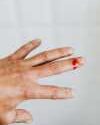
20 Apr How to Treat a Wound Properly
Many cuts, bumps, scrapes and grazes are entirely self-treatable, as many a parent and health enthusiast will know.
Learning how to properly treat wounds is an incredibly important life skill, as one can never know when they have to put their first aid skills to the test.
The fundamentals of wound treatment are mostly unchanged, even considering the actual damage done, so learning the basics is a great place to begin.
Below are a few beneficial tips on how to treat a wound properly should the situation arise.
Knowing When to Seek Immediate Medical Attention
Sometimes the full effects of the injury might not be immediately apparent, so striving to seek out professional medical advice whenever possible is essential.
Familiarizing yourself with signs and symptoms that can signify a deeper problem can help you to get better at making the right decisions. It is worth noting that you should always seek out your doctor for specific medical advice.
Cleaning the Area
Make sure to thoroughly clean the area of any potential debris, such as dirt. If this is left untouched in the wound it can lead to damaging consequences, including infection. Wounds will always heal faster if they are clean.
It is important to ensure that your hands are clean and you are working with sterilized implements, so as not to incur a risk of further damage or introducing a different infection.
 If the damage is a laceration near the tendons of the finger, seeking medical attention immediately is vital, as there could be deeper lasting damage that hinders your dexterity permanently.
If the damage is a laceration near the tendons of the finger, seeking medical attention immediately is vital, as there could be deeper lasting damage that hinders your dexterity permanently.
In some cases, you might need to receive stitches should the cut be wide enough. Making sure to clean the entire area with water and soap might be able to reveal the extent of the damage.
Dressing the Wound
 After the wound is thoroughly cleaned, it is time to apply a bandage to the affected area, especially if it has a chance to come into contact with clothes. You might wish to consider a silicone wound dressing for areas that are particularly irritable or painful to interact with.
After the wound is thoroughly cleaned, it is time to apply a bandage to the affected area, especially if it has a chance to come into contact with clothes. You might wish to consider a silicone wound dressing for areas that are particularly irritable or painful to interact with.
It can important to remember to regularly change the dressing in order to make sure the wound stays clean and properly looked after throughout the healing process.
If you cannot easily get to a pharmacy, salt water can be used to make a homemade saline solution, which can be used for a host of treatment benefits. (please ask your health care provider about this).
Applying this solution to your wound can work to clean away harmful bacteria that may accumulate from the dressing over time.
Changing the dressing every day is essential, but the number of times you may have to do this can increase depending on the nature of the wound.
Bleeding
If your wound is bleeding profusely, seeking medical help immediately is crucial. If it continues to bleed throughout the healing process your wound may be deeper than you initially expected, so contacting your GP for advice is a must.
If you feel as though the wound is exceptionally painful or difficult to manage, never hesitate to call the emergency services.
JOIN OUR EMAIL LIST
[mailpoet_form id="5"]We respect your privacy and will never share your details.
[last-modified]
The information on MedicalResearch.com is provided for educational purposes only, and is in no way intended to diagnose, cure, endorse or treat any medical or other condition. Always seek the advice of your physician or other qualified health and ask your doctor any questions you may have regarding a medical condition. In addition to all other limitations and disclaimers in this agreement, service provider and its third party providers disclaim any liability or loss in connection with the content provided on this website.
Last Updated on April 20, 2021 by Marie Benz MD FAAD
